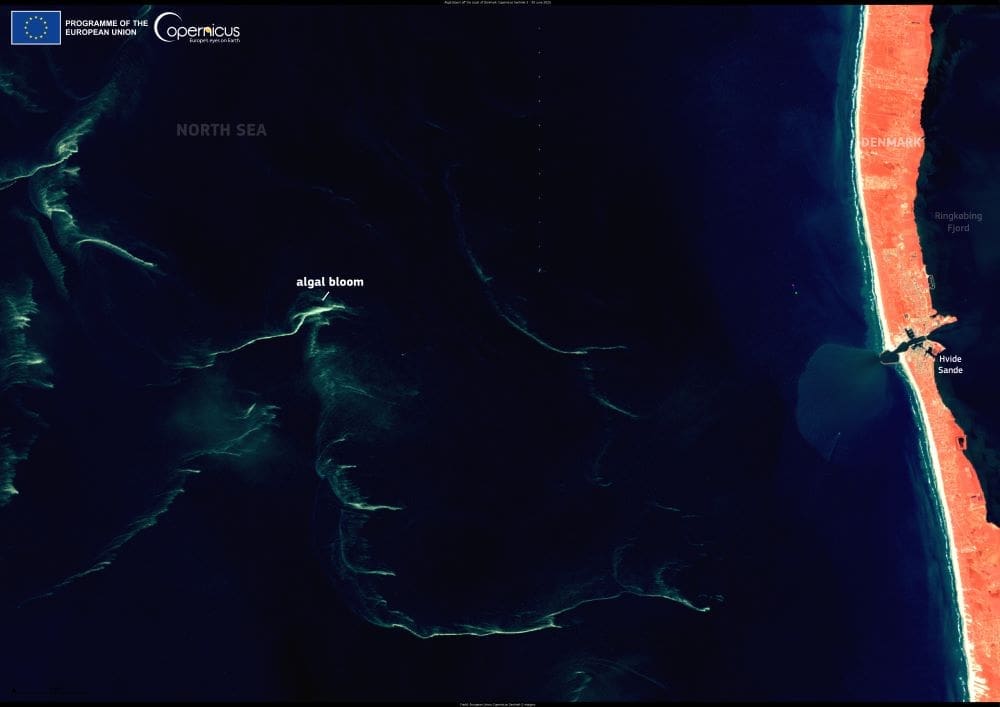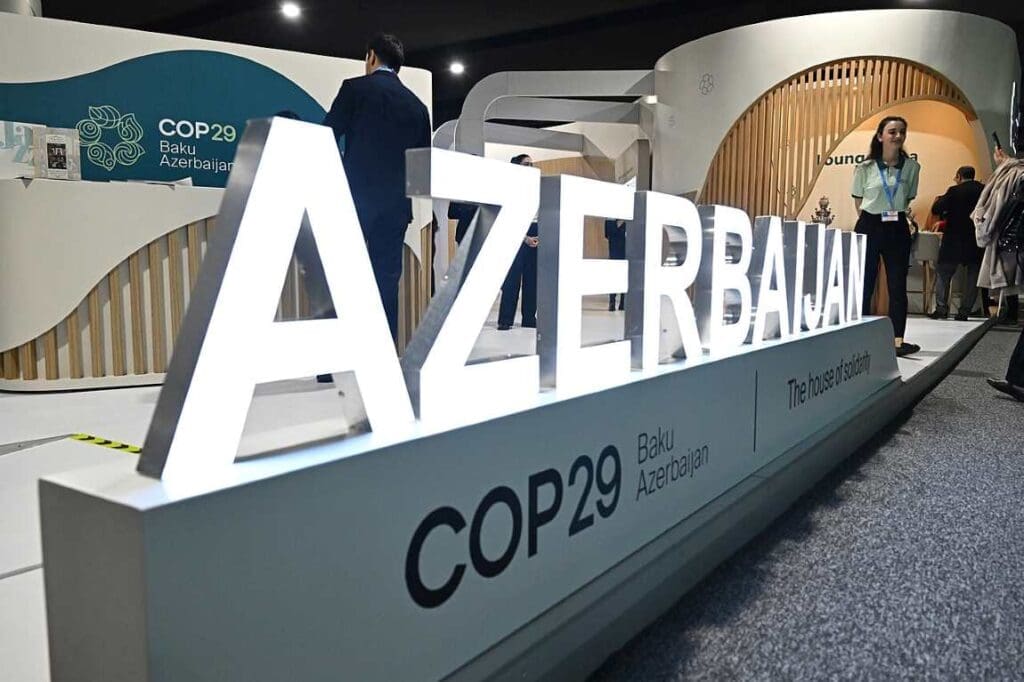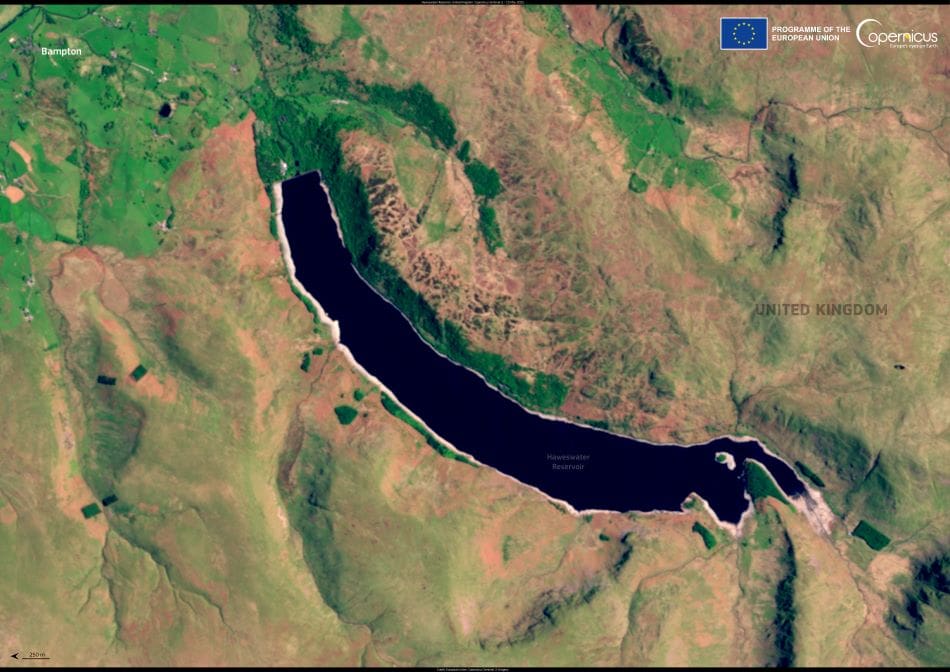Swirls of green stretch across the waters off Denmark’s western coast in this Copernicus Sentinel-2 satellite image, captured on 30 June 2025. The scene shows an algal bloom unfolding in the North Sea near the town of Hvide Sande, a recurring phenomenon in Danish waters during the summer months.
Algal blooms often form when excess nutrients enter the ocean, typically from agricultural runoff or wastewater, and combine with warm, calm conditions. The resulting overgrowth of microscopic algae can reduce oxygen levels, threaten marine species, and harm fisheries. In Denmark, such blooms are observed nearly every year and are a key sign of coastal eutrophication – a process in which water bodies become overly enriched with nutrients.

According to the Copernicus Marine Service, eutrophication is one of the most widespread environmental issues affecting European seas. While not all algal blooms are toxic, they can still disrupt marine food webs and damage sensitive habitats. In severe cases, they may even pose risks to human health through contaminated seafood or recreational water use.
The Copernicus Marine Service provides ocean monitoring data to help authorities and researchers assess and respond to the effects of algal blooms. This includes tracking bloom development, identifying pollution sources, and supporting long-term strategies for protecting marine ecosystems.
Featured image credit: European Union, Copernicus Sentinel-2 imagery



